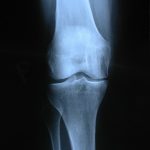 Remember those skeletons that hung in many of our elementary school classrooms growing up? The one component of those models is bone: humans are born with up to 270 of them! It is clearly important for us to protect this crucial framework in order to preserve a high quality of life.
Remember those skeletons that hung in many of our elementary school classrooms growing up? The one component of those models is bone: humans are born with up to 270 of them! It is clearly important for us to protect this crucial framework in order to preserve a high quality of life.
One concern as we get older is osteoporosis, a condition of thin and porous bones. Aging, which we cannot prevent (at least not yet!), is the greatest risk factor for osteoporosis. Bones thin over time because the hormones estrogen and testosterone—which are important to maintaining bone density—both decline with age. We all know bone fractures can be debilitating, especially for the elderly, so, as with all medical conditions, prevention is paramount.
Risk Factors
While we cannot prevent aging, several risk factors for osteoporosis are in our control. Smoking, poor nutrition, excess alcohol, soda consumption and inactivity increase the likelihood of osteoporosis. Bones are no different than any other system in our body—they need the best environment to thrive.
Diagnosis
The diagnosis of osteoporosis is made by an X-ray of the bones called a DXA. This test measures the bone density of the vertebrae, hip and forearm and compares it to the normal bone density of a young, healthy individual to produce what is called the T-score. A T-score of less than -1 to -2.5 indicates osteopenia, which is pre-osteoporosis. If the T-score is less than -2.5, this is defined as osteoporosis.
Once a diagnosis of osteoporosis is made, it is important the patient be evaluated for potential underlying causes. Thyroid disorders, vitamin D deficiency, cancer and certain medications are some other conditions that can affect bone. If these conditions are treated, the bone density may improve greatly.
Treatment
A few classes of medications can be used to treat osteoporosis:
• Bisphosphonates, such as Fosamax and Boniva, work by preventing bones from breaking down any further. These medications can be taken weekly, monthly or even once a year (intravenously, if needed).
• Prolia is an injectable medication given every 6 months and also works to prevent further bone density loss, but by a different method than bisphosphonates.
• Forteo is a once-daily injection that is anabolic, meaning it actually can increase bone density, a unique feature of this medication.
Appropriate intake of calcium and vitamin D is essential to preserve bone and ensure that all these medications work as best as possible.
This information has just scratched the surface of osteoporosis, but I hope it has been a helpful foundation!

What’s an “appropriate” intake of calcium and vitamin D? I’m a little surprised you focused on medications without providing information about diet and lifestyle interventions.
Good question. The recommended total calcium daily is 1200 mg (combined food intake and supplementation). If you eat dairy (yogurt, cheese, etc), then that is included in the total daily amount of calcium and the remainder can be supplemented with a calcium pill. Vitamin D intake recommendations remain variable among different specialty groups, but is generally 600-1000 units. Your total vitamin D 25 level on blood work should be above 30. Regarding lifestyle, walking and resistance training are excellent ways to maintain bone density.
Thanks for the question.